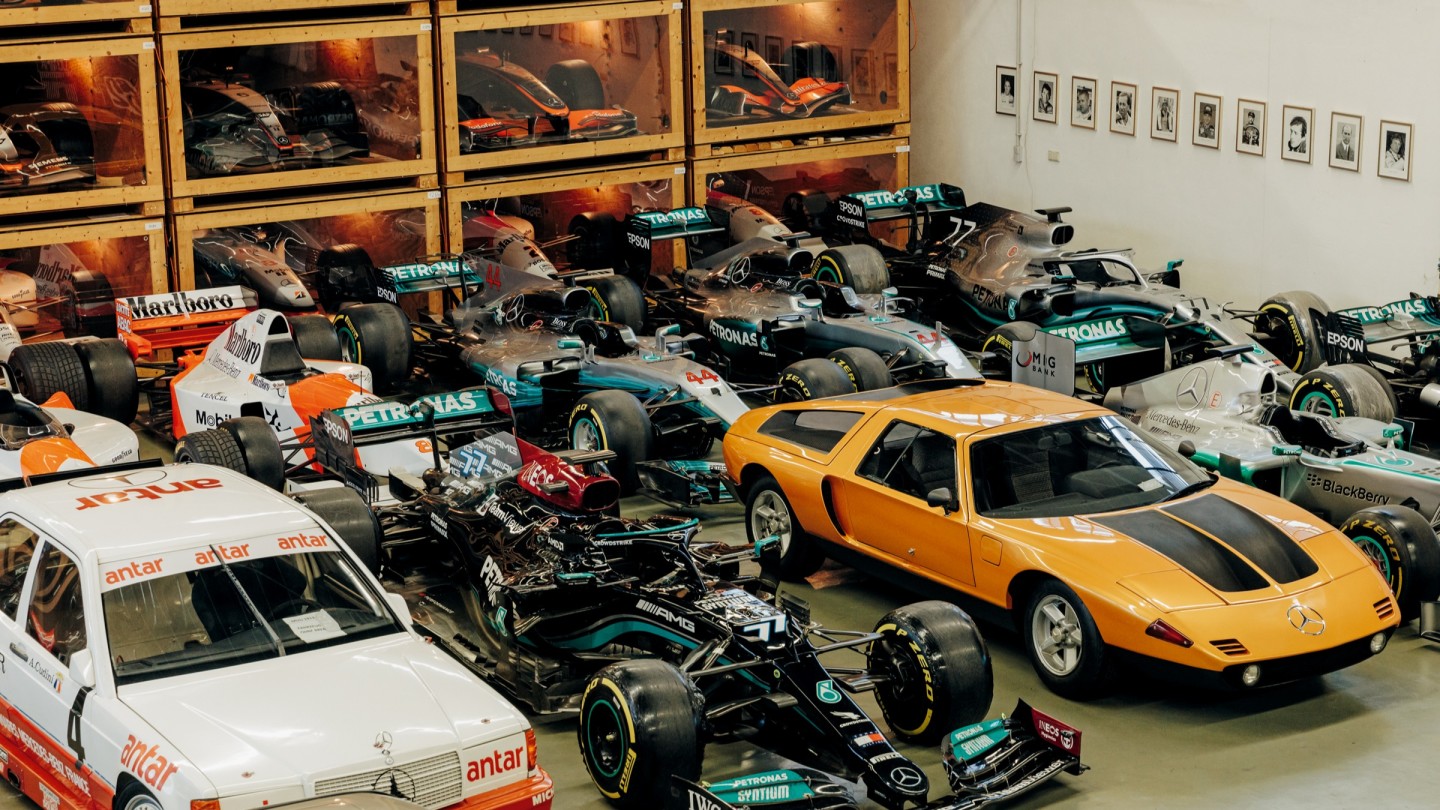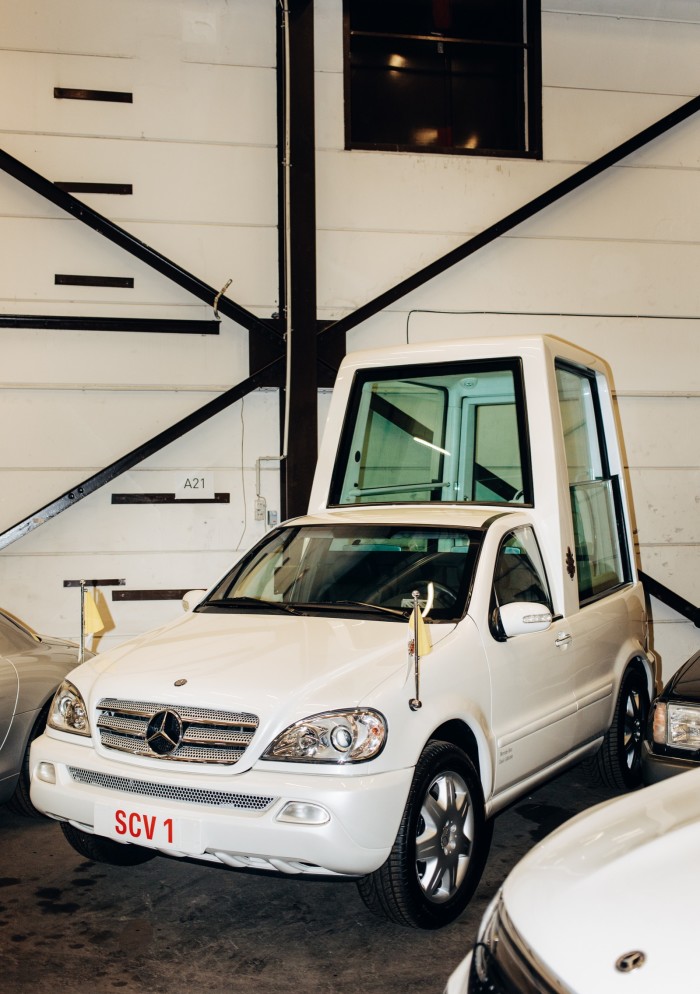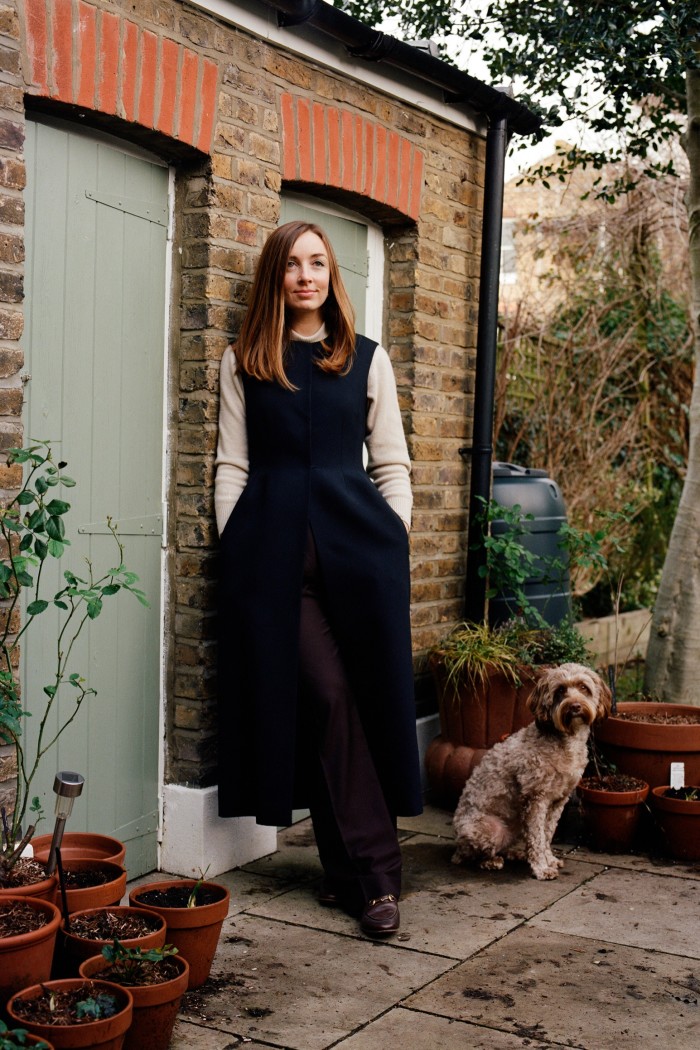HTSI editor’s letter: Popemobiles, exotic plants and pared-down wardrobes

Simply sign up to the Style myFT Digest -- delivered directly to your inbox.

I first heard about the Heilige Hallen at the FT Business of Luxury summit last spring. In the aftermath of an historic auction at Sotheby’s at which a 1955 Mercedes-Benz 300 SLR Uhlenhaut Coupé had gone for a record €135mn, the place was giddy with talk about the most expensive car ever sold. Even more exciting, the car, which had been put up for sale by Mercedes-Benz to raise money for a scholarship fund for research into environmental science and “decarbonisation”, was one of two. The other prototype had been stored in one of a series of warehouses held by the car manufacturer around Stuttgart, a magical repository of every model Mercedes-Benz has made.
I immediately asked the Mercedes representative if we might be permitted a rare visit. The company keeps pretty schtum about its extraordinary collection, which includes everything from the Uhlenhaut Coupé to roadsters, F1 cars and the original 12-cylinder W125 vehicle driven by Rudolf Caracciola to break the world-speed record on a public road in January 1938.

Peter Aspden visited late last year to get the grand tour and drive a couple of the archived motors. Standing among the stacked matchbox-style supercar containers, he likens the experience to being granted a solitary moment to admire the Sistine Chapel. For me, it’s the curios that really make the visit special: yes, the halls contain such wonders as the beige automobile driven in 1984 by a then-unknown Ayrton Senna, but I am more tickled by the discovery of a trio of Popemobiles in a corner, including the 2002 ML 430, with raised roof, that carried Pope John Paul II.
After so many petrol fumes, we need some greenery. Clare Coulson looks at the ongoing trend for indoor plants that took off in 2020 but has shown no sign of slowing since. I spent last weekend foraging around London trying to boost my green credentials – although I’m more a fan of ferns and orchids than of the big blousy bananas, monstera and philodendrons that make up the current jungle craze. On which note, I have long fought a losing battle to nurture orchids beyond a few weeks of survival, but two have been quite happily reflowering of late. Buoyed, I’ve since added to my orchid collection with moth and jewel varieties. No doubt such hubris will come to haunt me: the little feckers will surely die instantly.


Lastly, how many new pieces of clothing do you purchase in a year? For many FT subscribers, it seems the answer is very few. Since I have been at the paper, readers have delighted in telling me about their frugal habits, their ancient overcoats and the shoes they diligently resole every year. It turns out these careful types are very much in fashion. According to the Hot Or Cool Institute, a Berlin-based think tank, in order to limit global temperatures from rising we should be buying no more than five new garments a year. It’s an idea that chimes with the “buy less, buy better” maxim championed by Vivienne Westwood, the designer and environmental campaigner who died in late December, and it seems especially pertinent in 2023.
Lauren Indvik, the FT’s fashion editor, has happily signed up to take the challenge. She writes about her commitment to shop judiciously. As well as suggesting brands that offer ethical choices, she’s also compiled a list of the more versatile pieces she plans to incorporate into her wardrobe this year.
Shamefully, it’s too late for me to sign up to the low-buy wardrobe: I’ve already hit the five-item threshold and it’s only February. That said, I do try to shop from brands where the supply chain is more accountable. And unless the moths get to them first, each piece of clothing is considered a forever piece. But, try as I might, I can’t resist the occasional splurge of retail therapy. Shopping is still a lot of fun. Maybe the solution is a barter system? We can share a mutual clothing fund. You can keep your threadbare coat and sweaters, and I’ll use your quota to buy some silly shoes.
For the best of HTSI straight into your inbox, sign up to our newsletter at ft.com/newsletters
Comments